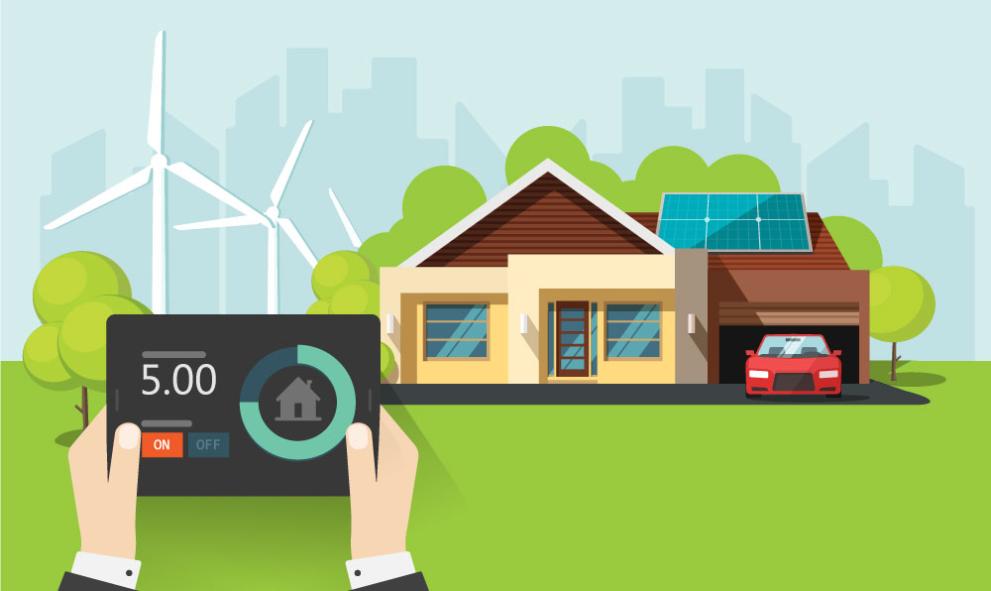Decarbonising the heating and cooling sector is central to achieving the energy transition. This is recognised in the European Green Deal and the ‘Fit for 55’ package, as without increasing the share of renewables in this sector, our energy and climate targets cannot be achieved cost-effectively.
The process of replacing fossil fuels with renewables and other zero-carbon solutions in heating and cooling has so far been slower than in the case of electricity generation.
The share of renewables provided only 24.8% of the final energy consumption in the heating and cooling sector in 2022, according to Eurostat.

Accelerate the development of renewables
The 2018 Renewable Energy Directive introduced specific provisions to accelerate the development of renewables in heating and cooling, in particular by increasing the policy prioritisation of this sector. These include indicative targets where each EU country must increase the share of renewables in heating and cooling by an indicative 1.1 percentage point every year, with a similar target for district heating and cooling.
The revised Renewable Energy Directive (EU/2023/2413) strengthens the heating and cooling target (Article 23), as well as the district heating and cooling target (Article 24). It also extends the measures EU countries can take to achieve these targets and includes specific provisions on integrating waste heat and cold and enhancing the heating and cooling sector’ role in energy system integration. In addition, the provisions on training and certification of heating and cooling systems’ installers (Article 18, Annex IV) and measures for integrating renewables in the EU building stock (new Article 15a), the largest heating and cooling end-use sector, are also strengthened.
EU Heating and Cooling Strategy
The 2016 EU Heating and Cooling Strategy provided a first overview of the energy consumption and fuel mix of the heating and cooling sector in the main end-use sectors: buildings and industry. It also set out actions and tools to ensure that the heating and cooling sector contributes to the EU objective of climate neutrality by 2050. These actions and tools, which were implemented in the Clean Energy for all Europeans’ package adopted in 2019, relate to increasing renewable energy and energy efficiency in this sector, while applying in parallel an integrated approach to the energy system.
The EU renewable energy target has strong links with the EU energy efficiency targets and measures. The more energy that is saved, the easier it is for EU countries and the EU to fulfil their renewable energy target. In addition, renewable heat sources (ambient and geothermal energy used mainly via heat pumps, solar thermal, etc.) provide low temperature heat (up to 200° C), working most optimally with highly energy efficient well-insulated buildings or low temperature process heat (for example, breweries and food drying).
Decarbonising the heating and cooling sector is one of the 3 focus areas of the renovation wave strategy.
Evidence base supporting policy making and implementation
To assist policymaking, develop new legislation and ensure evidence-based implementation, the Commission has conducted a series of studies on the heating and cooling sector.
Studies on heating and cooling
This study aims to support the analytical basis for the development and implementation of policies towards the full decarbonisation of heating and cooling by 2050 in buildings and industry. It assesses potentials for the deployment of renewables and the suitability of various transition pathways for EU countries and outlines possible policy sets.
This study on electrification of heating analyses the most cost-effective options for direct and indirect electrification of heating in buildings as well as the related barriers.
First published in 2020, the study has since been updated annually. It provides an overview of the Commission’s district heating and cooling support activities and projects.
Focusing on renewable space heating, this study presents a comprehensive overview of consumption data, technologies, fuel-mix and regulatory frameworks and best practices for renewable energy communities. It also models possible decarbonisation pathways.
A study on district heating and cooling providing an overview on market and regulatory frameworks and presenting 10 case studies on best practice to illustrate successful models to integrate renewable energy and waste heat sources into thermal networks.
Focusing on policy support for heating and cooling decarbonisation, this study sets out a heat decarbonisation roadmap and provides recommendations for policies covering space heating in buildings and the process heating industry. It also includes a meta-study on key literature.
A study on renewable cooling providing a comprehensive background analysis in support of the Delegated Act on a methodology to calculate renewable energy used in cooling under the Renewable Energy Directive.
Comprehensive assessments on efficient heating and cooling
In line with Article 14 of the Energy Efficiency Directive (2012/27/EU), EU countries are requested to carry out a comprehensive assessment on efficient heating and cooling, and notify the Commission when completed. These assessments should be carried out every 5 years.
The revised Annex VIII to the Directive (amended by Delegated Regulation 2019/826/EU) describes the methodology for the assessments. Notably, the assessments must comply with energy union legislation, and they be closely linked with the planning of policy measures related to the Regulation on the governance of the energy union and climate action (EU/2018/1999).
The reports, assessments and their annexes for 2015 and 2020 and per EU country are available in original language and English.
Related links
- Commission delegated regulation for the comprehensive assessment of the potential for efficient heating and cooling (EU) 2019/826
- Commission recommendation on the content of the comprehensive assessment of the potential for efficient heating and cooling under Article 14 of the energy efficiency directive and annex ((EU) 2019/1659)
- EU Strategy on Heating and Cooling: COM(2016) 51
- Commission Staff Working Document Review of available information, SWD(2016) 24 final
